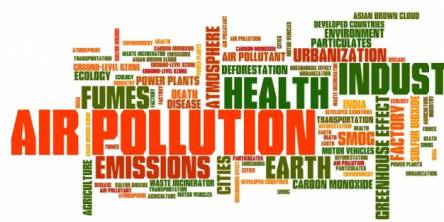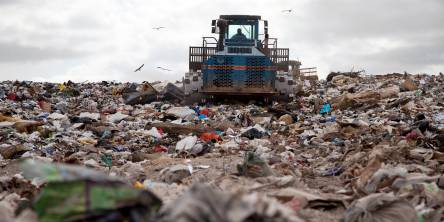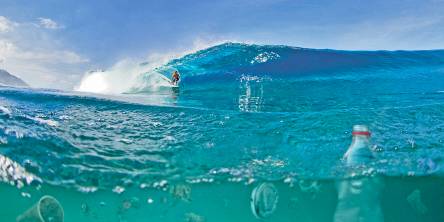Major Water Pollutants and How to Stop Them
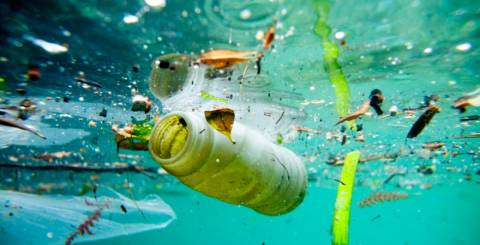
What is Water Pollution
Water pollution is the process of contamination of water bodies such as rivers, lakes, ponds, oceans, and more. When pollutants that have not been treated to get their harmful compounds decreased enter the water ecosystem, the effects of water pollution are something that happens naturally. The consequences of this disaster impact the life of most forms of life, such as animals of all kinds (including ground and water species), humans, and plants of all types.
High levels of water pollution lead to other causes of contamination, such as land pollution, disease spreading, and extermination of entire animal species.
Natural Causes of Water Pollution
Apart from the most common reasons for water contamination which are mostly a result of human activities, there are also absolutely natural processes that lead to alteration in the quality and molecular structure of water.
Oxygen-depleting Substances
Plant matter or leaves are cause the so-called turbidity. This is a process that blocks the access of sunlight to plants and makes them somehow unable to gather the required resources for their growth process. These oxygen-depleting substances also cause gills blockage to some fish species which results in a reduced lifespan.
Coliform Bacteria
The presence of this bacteria is usually associated with the existence of a fecal organism in water. Most coliform bacteria are harmless but the rest of the pathogens that come from the warm-blooded animals’ fecal mass may cause diarrhea to children and grown-ups. To this day about 2, 000 kids die each day of diarrhea caused by water contamination and poor waste management and water treatment.
Anthropogenic Types of Water Pollutants
Apart from the natural process of water pollution, the existence and activity of humankind to this day leaves the most significant impact on water resource contamination. Most of it is caused due to the constantly increasing rate of industrial activities, poor waste management, energy production and not following the regulations of rubbish removal. The usage of pesticides and herbicides for agricultural purposes is one of the other general sources of water pollutants.
Industrial Pollution

Theoretically, the industrial activities can be almost 100% secure to the environment. However, in practice, things are a bit different. Owners of small businesses cannot cope with the taxes and regulations of their governments which lead to regular fly-tipping and other activities that lead to water pollution.
Use of Outdated Technologies
Industrial premises that can’t afford contemporary equipment continue to use outdated technology and methods of industrial activities that generate a tremendous amount of commercial waste. When this is not disposed of in an environmentally friendly way or recycled properly, it usually causes air pollution and groundwater contamination.
Due to the high demand for raw materials that are required for most of the industrial activities, operations like mining need to be done regularly. Unfortunately, these activities result in high amounts of copper, lead, and mercury that enter the ecosystem and cause water pollution
Thermal pollution
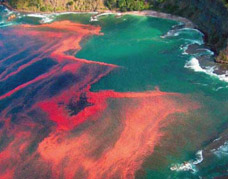
This is a process that usually occurs because of energy production facilities like power plants. These facilities use the water resources to cool the power plants and then return the water to the ecosystem with changed properties.
The used water supply overheats and with significantly reduced oxygen levels. That causes oxygen depletion of plants and may disrupt the life of fish species which may be highly attracted by the increased water temperature, especially in cold seasons.
The metabolism of living species in water is affected even by a slight change of 1 degree Celcius. That disrupts the coagulation of cell proteins and affects the productivity and lifetime of plants and animals.
Thermal Shock
Thermal Shock happens when there is an instant change in the water temperature. When there are living organisms in this area that get quickly and significantly warmer or cooler, the life forms cannot adapt to the change fast enough. Thermal shock usually kills many animals species instantly or causes inevitable damage to their body structure.
Land pollution
Despite that land pollution and water contamination should be studied separately, they are actually highly related and can be viewed as processes that somehow affect each other naturally. Land pollution happens when waste materials are being disposed of at the land surface or buried deep into the soil due to the emission of chemicals that soak deep into the soil and enter into groundwater.
Herbicides and Pesticides
The constantly increasing demand for food resources requires the usage of advanced agricultural techniques. Unfortunately, most of them are related to the usage of huge quantities of pesticides. Sadly, about 95% of the herbicides end up at the topsoil layer and later get deeper into the food and water resources.
Effects of Water Pollution
The Effects of water pollution are various and all of them are negative. Some of them can even be considered highly dangerous because they lead to thousands of human deaths per day. Overall, there aren’t any harmful effects of water pollution that cannot be avoided but some are either too expensive and others are happening at a scale that is perfectly natural and cannot lead to any extreme levels of contamination.
Aquatic Animals Death
Fish, seabirds, marine life, and other animals have become victims of water pollution caused mostly by toxic waste and plastic pollution. The tiny plastic pieces that are being swirled by the Ocean Gyre in the Pacific ocean terrorize the marine life across the earth by entangling it or poisoning it until painful death puts an end to their misery. Almost any death of animals done by water contamination is a human deed.
Diseases
Eating polluted seafood can give you hepatitis that is hard or even almost impossible to cure. Cholera and diarrhea cause the deaths of thousands of people every day in less developed countries due to the lack of clean water resources. The main reason for this is uncivilized living, the absence of water treatment, and the lack of financial resources that may somehow secure bottled water for the people.
Diarrhea

This terrible disease is caused by a parasitic organism that is living in contaminated water. This physical state is considered to be a symptom of infection which is caused mostly by unclean water and ignorance of basic hygiene. Human and animal feces are a dangerous water pollutant and drinking from such water resources is highly not advisable without first purifying the water.
Studies prove that 1 out of 9 children's deaths is due to diarrhea. Although being easily treated with the proper medical equipment and medicine, in less developed countries the symptoms of diarrhea are being ignored because of lack of hospital facilities and medical treatment resources.
Water Pollution Solutions
Efficient household waste disposal can certainly guarantee reduced amounts of waste stacked at the landfill. In the long term, this may greatly help to reduce the levels of water pollutants but only when this is adopted by a significant percentage of the population on Earth.
Strict Regulations of Industrial Activity
When the industry is facing the challenge to earn a profit that satisfies the owners and the employees as well but that is impossible due to the taxes that have to be paid for waste management and other required procedures, some industry giants prefer to break the law and commit crimes that lead to terrible pollution. One of these is waste disposal in rivers instead of paying to a licensed commercial waste carrier. More strict control from the local governments can lead to solutions for this common issue.
Professional Tips To Reduce Water Pollution
- Don’t leave water running when there is no need for that. Usually, this is done during teeth brushing and shaving.
- Find profitable ways to recycle for money and save cash by upcycling or recycling old things into stuff that you usually pay for. That will also reduce the waste you produce instead of leaving it to be dumped.
- Do not drop any toxic/hazardous waste in the drain. That instantly sends the harmful substances in the ecosystem and doesn’t help at all to reduce water pollution.
- Properly dispose of toxic chemicals rather than dropping them down the drain.
Similar Articles
This article is written purely for providing the knowledge about difficulties faced during recycling boxes or plastic materials. Try to avoid pollution by lessen the use of plastic material.
It is always wrongly assumed that the indoor air quality in a house is pure. There are a number of causes that may be polluting the indoor air quality in your house without even you realizing them. So make sure to know the causes along with the tips to improve the air quality naturally.
Air pollution is one of the most dangerous causes of some of the known and even unknown critical diseases. One cannot prevent himself from dying but with preventive measures, one can certainly remain alert, and stay away from becoming a victim of irreversible health issues caused by air pollution.
Landfilling is one of the most ancient methods of waste management which is still used very actively all around the globe. Despite being very unfriendly to the environment, landfill sites store enormous amounts of rubbish either under the ground or directly onto it, exposing the atmosphere to very harmful emissions.
Waste and pollution are problems that have escalated at growing rates in the past decades. It sounds like a cliché, but it happens right before our eyes. As one of the biggest pollutants, plastic plays a significant role in the bigger picture - we can see plastic junk on the beaches, ocean costs, in the ocean, in the rivers, in the woods, fields, even on the streets around us.



